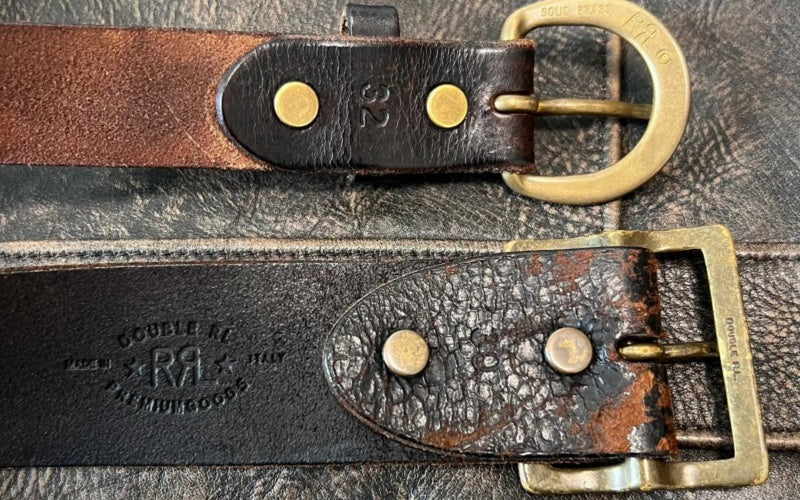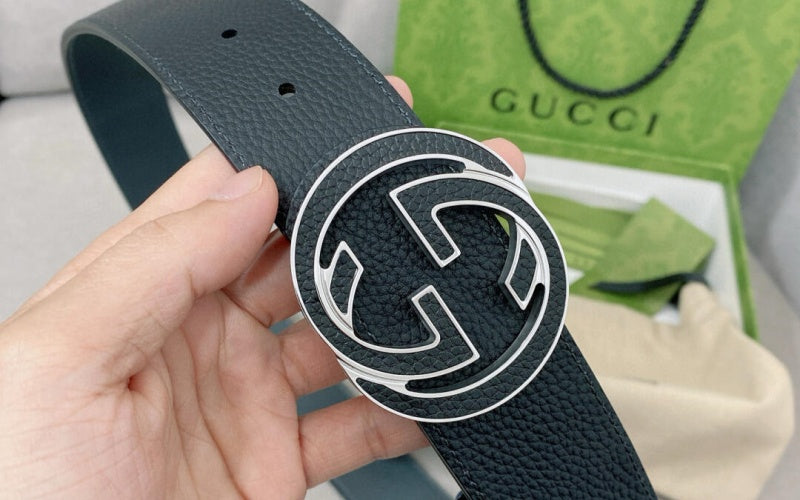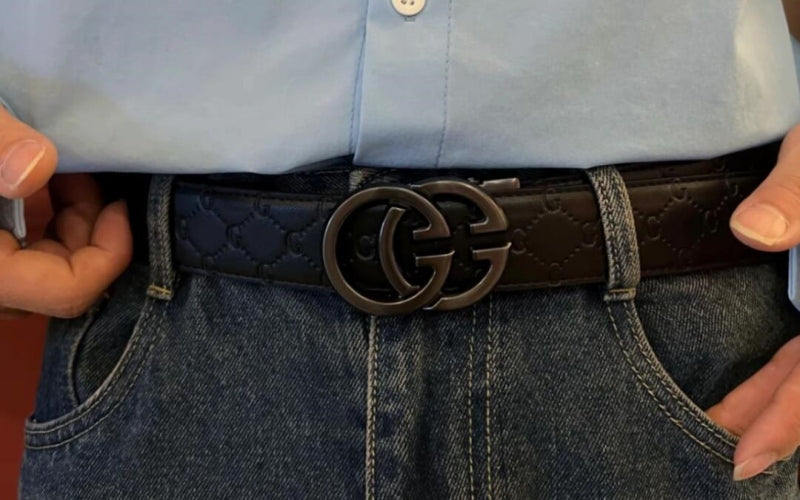
When Were Leather Belts Invented? (Quick Belt History)
Let’s start with a riddle: What’s older than the wheel, more universal than sliced bread, and has survived everything from Bronze Age battles to ’90s skater fashion?
If you guessed leather belts, give yourself a gold star (or a bronze one, since we’re going way back). These humble straps have been cinching waists, holding swords, and accidentally poking people in airport security lines for millennia.
But when exactly did someone look at a cow, think “I’m gonna turn that into a belt,” and kickstart a fashion revolution?

The OG Belt: Ötzi the Iceman’s Prehistoric Fashion Statement
In 1991, hikers in the Alps stumbled upon a 5,300-year-old mummy named Ötzi. Alongside his arrow wounds and questionable dental hygiene, Ötzi rocked a leather belt made from calf hide. This bad boy wasn’t just holding up his leggings—it had a pouch for tools, proving that utility belts aren’t just for Batman.
Key Details:
-
Material: Calf leather (tanned with animal fat, because Neanderthal chemistry was wild).
-
Design: 2 inches wide, with a bone buckle.
-
Function: Held a dagger, fire-starting tools, and probably snacks for the afterlife.
Takeaway: Belts have always been multitaskers. Take notes, fanny packs.

Ancient Civilizations: Belts as Tools of War & Status
A. Ancient Egypt (3000 BCE): Hieroglyphs & Hip Huggers
Egyptians loved belts more than cats (almost). Both men and women wore woven leather belts dyed vibrant colors. Pharaohs added gold buckles to flex their god-king status, while laborers used simple straps to hold up kilts in the Nile heat.
Fun Fact: Tutankhamun’s tomb had a belt embroidered with gold falcons. Even in death, drip mattered.
B. Mesopotamia (2000 BCE): The Birth of the Tool Belt
Babylonian soldiers strapped on leather belts to carry swords, shields, and probably clay tablets full of ancient memes.
Innovation Alert: The first metal buckles appeared here. Made from bronze, they were clunky but revolutionary.
C. Ancient China (1500 BCE): Silk Roads & Belt Rituals
Chinese nobles wore silk sashes, but warriors opted for leather belts with jade ornaments. During the Zhou Dynasty, belts denoted rank—the fancier the buckle, the higher your social credit score.
 Love this belt? Click the pic to see more just like it.
Love this belt? Click the pic to see more just like it.
Classical Antiquity: Greeks, Romans, & Belts That Mean Business
A. Ancient Greece (800 BCE): Spartans & Spartan Belts
Greek soldiers (hoplites) wore thick leather belts called zoster to anchor their armor. No belt? No battle. Meanwhile, philosophers like Socrates probably just tied ropes around their togas and called it a day.
B. Ancient Rome (500 BCE): Legionnaires & Luxury
Roman soldiers loved belts (balteus). A legionnaire’s belt held his dagger (pugio), coins, and a certificate of “I survived Gaul.” Off-duty, wealthy Romans flaunted belts with embossed designs—proto-bling for the toga party set.
Cool Fact: Roman women used belts to cinch their stola (dresses), proving that waist definition is timeless.

Middle Ages (500–1500 CE): Belts Get a Medieval Glow-Up
A. Knights & Bucklemania
Medieval knights wore sword belts over armor, often decorated with family crests. The bigger the buckle, the more land you (allegedly) owned.
B. Women’s Belts: From Practical to Ornate
Noblewomen rocked belts made of silk, gold thread, or even pearls. Peasants? They got hemp straps and gratitude.
C. The Rise of the Coin Purse Belt
Before pockets, belts had hanging pouches for coins, keys, and suspicious herbs. Think of it as the original fanny pack (but with more plague).
Renaissance to Industrial Revolution (1500–1800s): Belts Take a Backseat
A. Suspenders Steal the Show
With the rise of breeches and tunics, belts fell out of favor. Suspenders (braces) became the go-to for holding up pants—unless you were a pirate, in which case, belts held your cutlass and your ego.
B. The Cowboy Era: Belts Ride Again
Out West, cowboys relied on wide leather belts to holster revolvers and survive saloon brawls. Bonus: Doubled as a tourniquet if you lost a duel.
 Love this belt? Click the pic to see more just like it.
Love this belt? Click the pic to see more just like it.
20th Century: Belts Become Pop Culture Icons
A. 1920s–1930s: The Birth of Belt Loops
Levi’s added belt loops to jeans in 1922, and suddenly belts were back in business. Thank you, denim gods.
B. 1950s: Rebel Without a Belt?
James Dean and Marlon Brando made belts a symbol of teen rebellion. Bonus: Belt buckles got bigger than their pompadours.
C. 1980s–1990s: The Era of Excess
From studded punk belts to Saved by the Bell’s neon abominations, belts became louder than a Metallica concert.
 Love this belt? Click the pic to see more just like it.
Love this belt? Click the pic to see more just like it.
Leather Belts in Modern Times: From Practical to Luxury
A. 2000s: Minimalism Takes Over
The rise of “business casual” brought us slim leather belts in black and brown. Thrilling.
B. 2010s–2020s: Belts as Statements
Designers like Gucci and Hermès turned belts into status symbols. Pro tip: If your belt costs more than your car, you’ve made it.
C. Sustainability Era
Vegan leather and eco-tanning entered the chat, but traditionalists (like Beltley) stick to full-grain leather—durable, biodegradable, and age-defying.
 Love this belt? Click the pic to see more just like it.
Love this belt? Click the pic to see more just like it.
Cultural Significance: Belts in Myths, Movies & More
-
Mythology: Norse god Thor had a belt (Megingjörð) that doubled his strength. Suck it, protein shakes.
-
Movies: Indiana Jones’ belt held his whip and his PhD in chaos.
-
Symbolism: In many cultures, belts symbolize power, unity, or “please don’t let my pants fall down.”
The Anatomy of a Timeless Leather Belt
What makes a belt survive 5,000 years of trends?
-
Full-Grain Leather: Tough, develops a patina, and won’t crack like your New Year’s resolutions.
-
Solid Buckle: Brass or stainless steel that won’t tarnish after one rainstorm.
-
Stitching: Double-stitched seams for when life gets messy.
Beltley’s Nod to History: Our belts use techniques honed over centuries—because if it worked for Ötzi, it’ll work for your Zoom meetings.
FAQs: Your Burning Belt Questions, Answered
Q: What’s the oldest belt ever found?
A: Ötzi’s 5,300-year-old calf leather belt. Sorry, your “vintage” 1990s buckle doesn’t compare.
Q: Did ancient people use belt sizes?
A: Nope! They adjusted with knots, holes, or sheer willpower.
Q: Why did belts decline in the Renaissance?
A: Suspenders and ruffled shirts stole the spotlight. Also, nobody wanted to cover up their fancy doublets.
Q: Are leather belts eco-friendly?
A: Full-grain leather biodegrades; pleather pollutes. Choose wisely.
Beltley’s Homage to History: Crafting Belts for the Next 5,000 Years
At Beltley, we honor belt history with:
-
Artisan Techniques: Hand-stitched, vegetable-tanned leather that ages like a fine wine.
-
Timeless Designs: From minimalist buckles to embossed details fit for a pharaoh.
-
Durability: These belts will outlive your gym membership, your car, and possibly your marriage.
 Love this belt? Click the pic to see more just like it.
Love this belt? Click the pic to see more just like it.
Final Thought: Leather belts are humanity’s ultimate sidekick. They’ve survived wars, trends, and questionable fashion choices—and they’re not going anywhere. So next time you buckle up, remember: You’re wearing a piece of history. Make it a good one.
Ready to Wear History?
Explore Beltley’s Timeless Collection Here—where 5,000 years of craftsmanship meet modern luxury.
P.S. If your belt lasts less than a decade, you’re doing it wrong. Ours come with a 10-year warranty—take that, Bronze Age.

